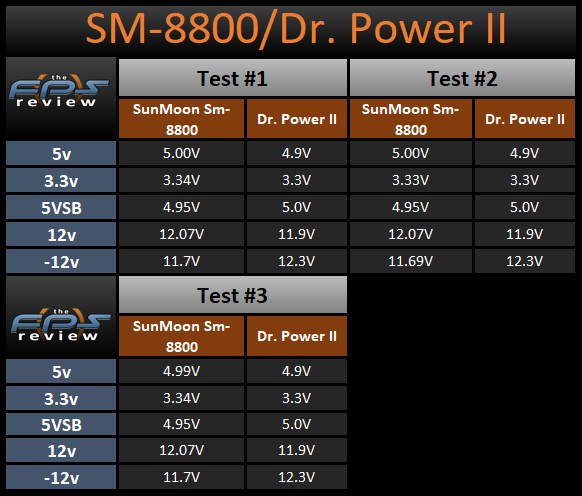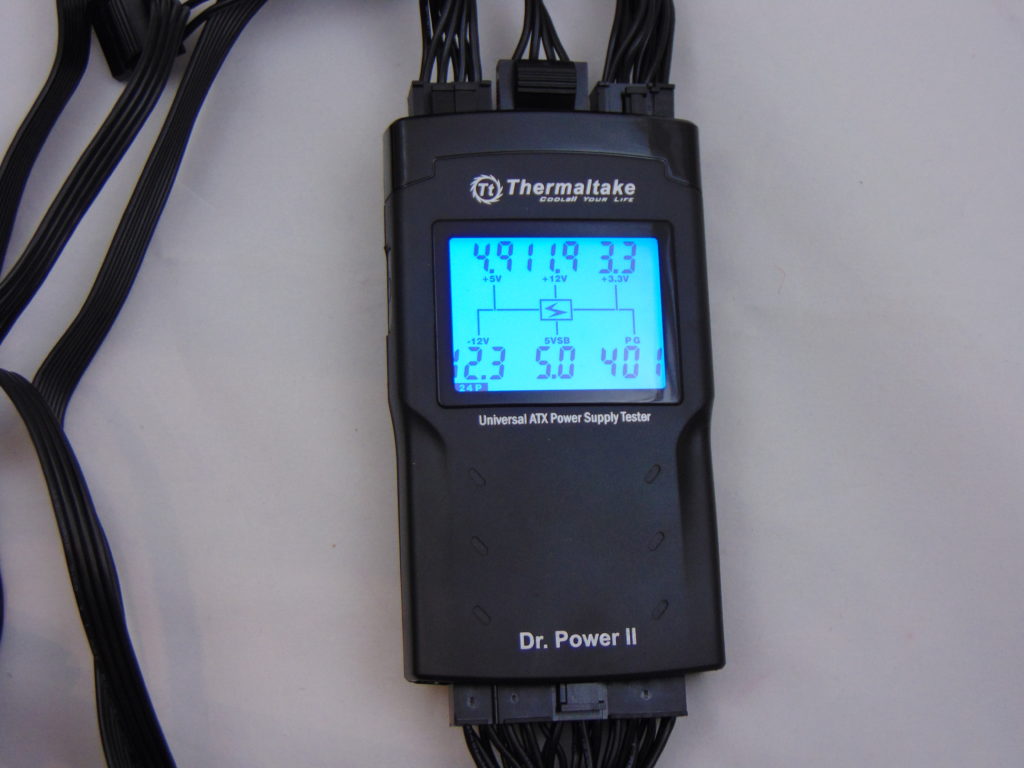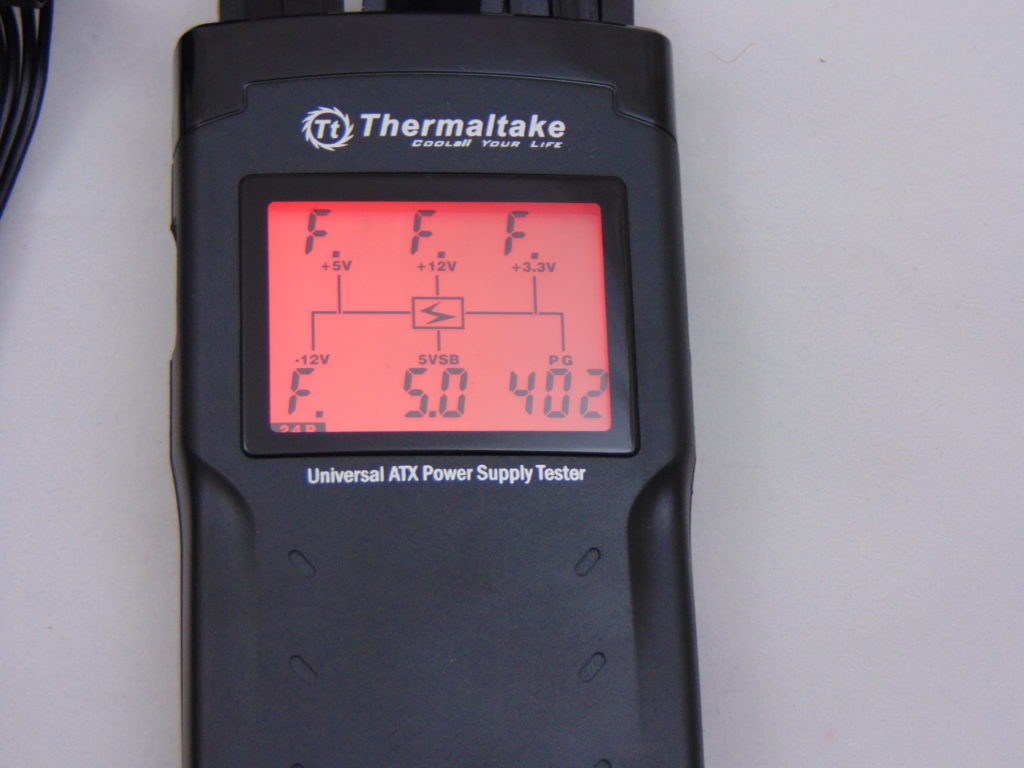Load Testing
For those of you that are curious as to some of the reasoning and equipment behind our PSU testing program here at TheFPSReview, we have put together an introduction for you. This program is based on what the author developed at [H]ardOCP and utilizes the equipment bequeathed to the author by Kyle Bennett. The testing we are conducting today is a bit different as we will only be testing using the parameters of the Dr. Power II in its automated test mode rather than a full testing suite given that is all the tester is supposed to do.
SunMoon SM-8800 vs. Dr. Power II Load Testing Results



Today, we see measurable differences in the voltage outputs between the SunMoon Sm-8800 and Dr. Power II. Interestingly, when we look at the results, we see that the values posted by the Dr. Power II do not fluctuate between tests at all. The SunMoon SM-8800 shows us slight differences between Test #1, Test #2, and Test #3. However, each of these differences is in the second digit past the decimal point and the precision on the Dr. Power II is not that good. So, it is likely just missing these changes due to the inherent precision of the instrument.
The second thing we notice here is that the differences between what the SunMoon SM-8800 and the Dr. Power II record diverge more as the voltage increases in magnitude. So, the values we see today do vary to a good degree between these two measurement methods and the Dr. Power II gives us less precision. Let’s move on to some final thoughts about this exercise.
